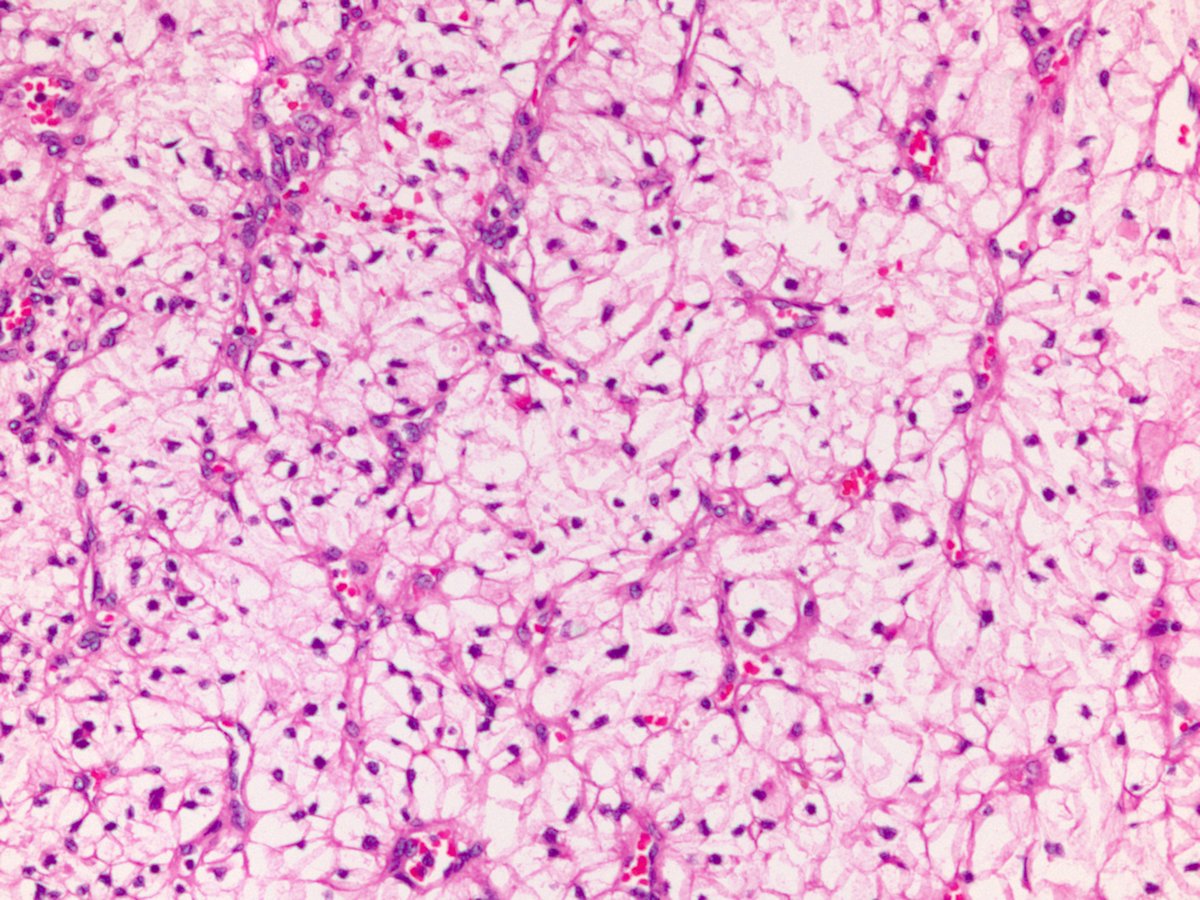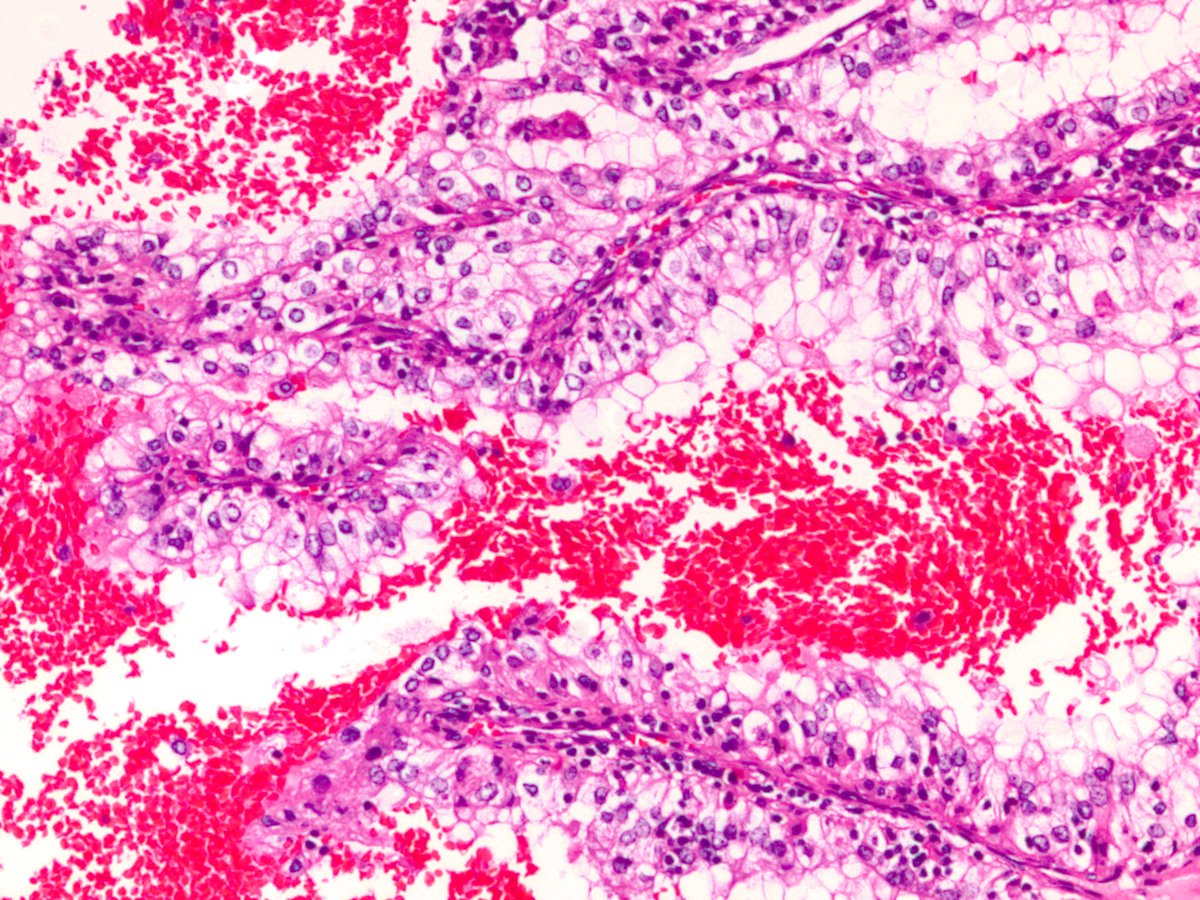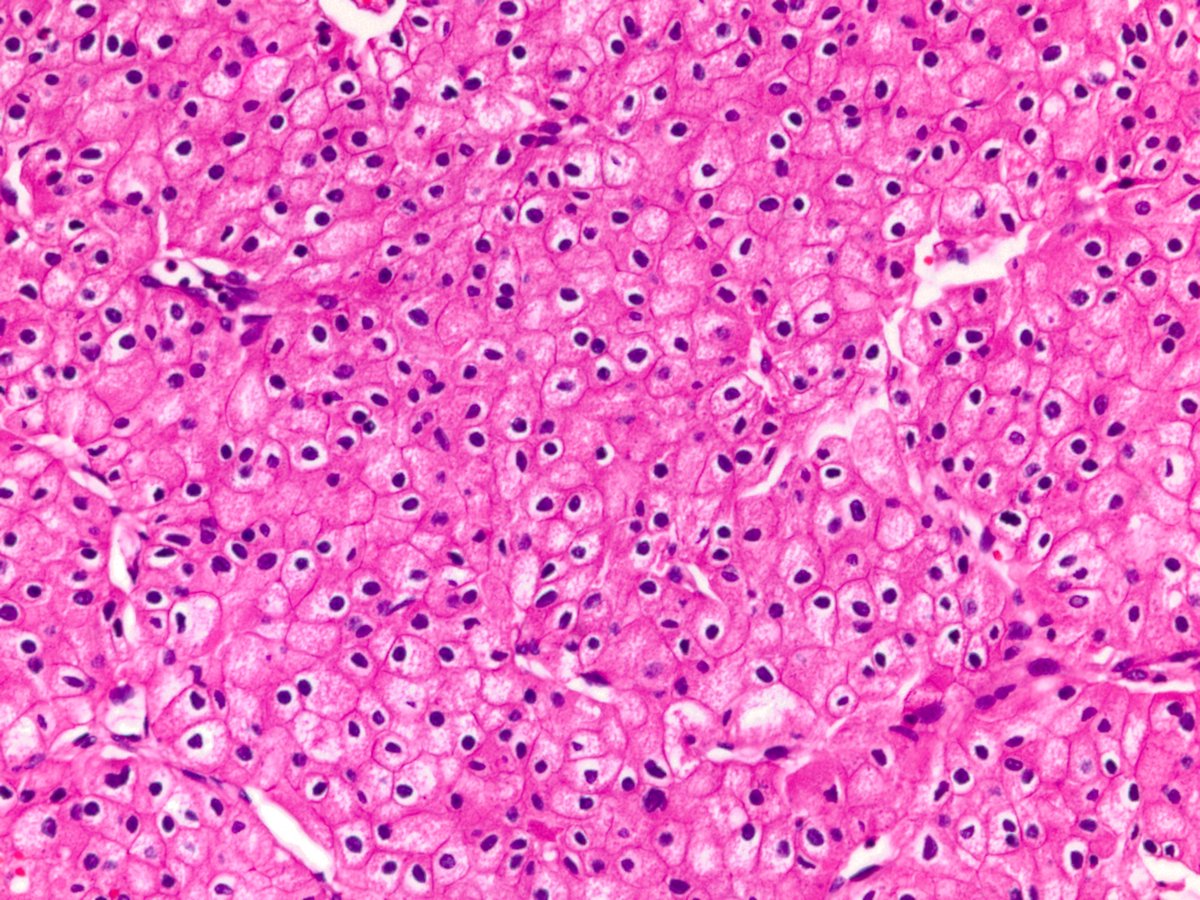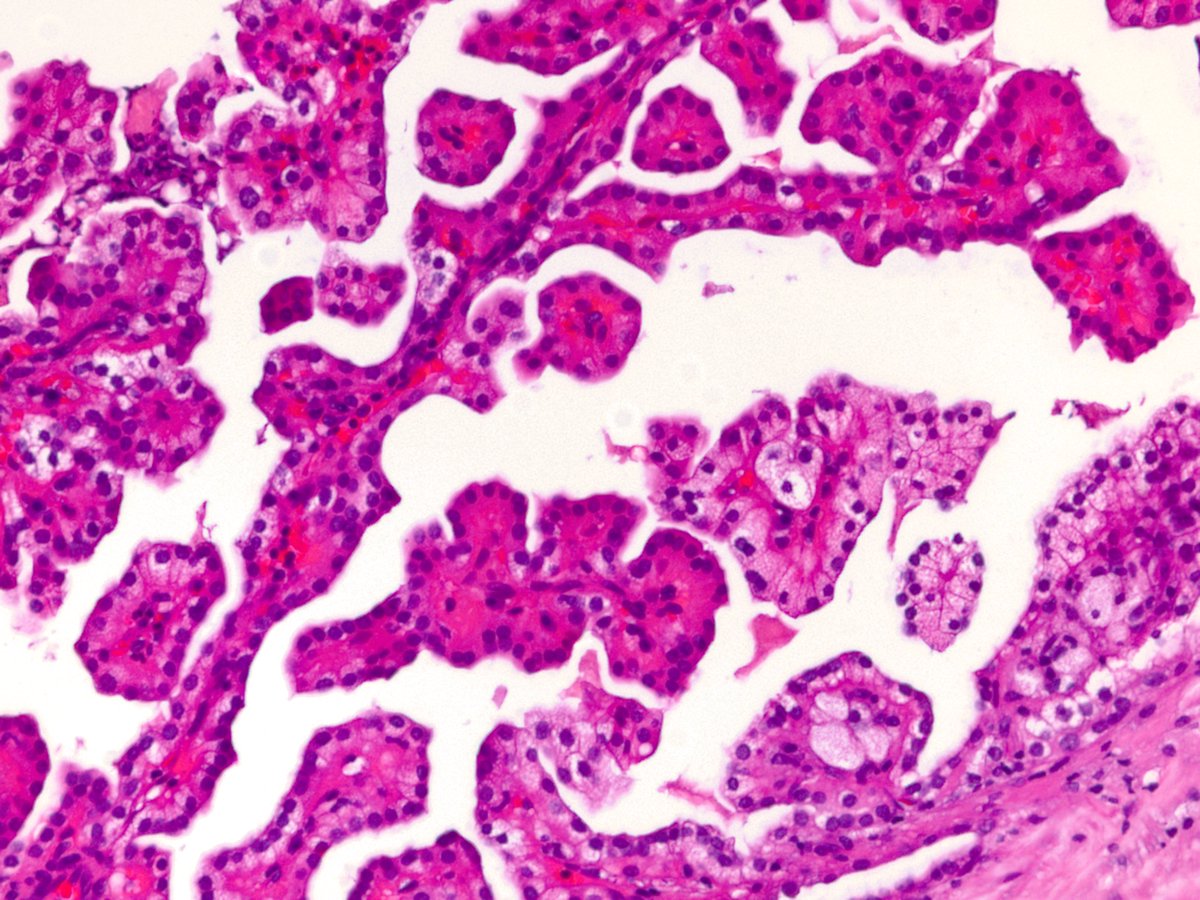
227g placenta (>90% for gestational age)
#placentapath #pedipath
What are the green arrows pointing to?
#placentapath #pedipath
What are the green arrows pointing to?

Cysts! Let's go to the micro.
Here we see enlarged villi with myxoid stroma. The cystic structures on the gross correspond to this massive, cavernous cystic structure on the left
Hint: some might even call this a cistern.

Here we see enlarged villi with myxoid stroma. The cystic structures on the gross correspond to this massive, cavernous cystic structure on the left
Hint: some might even call this a cistern.
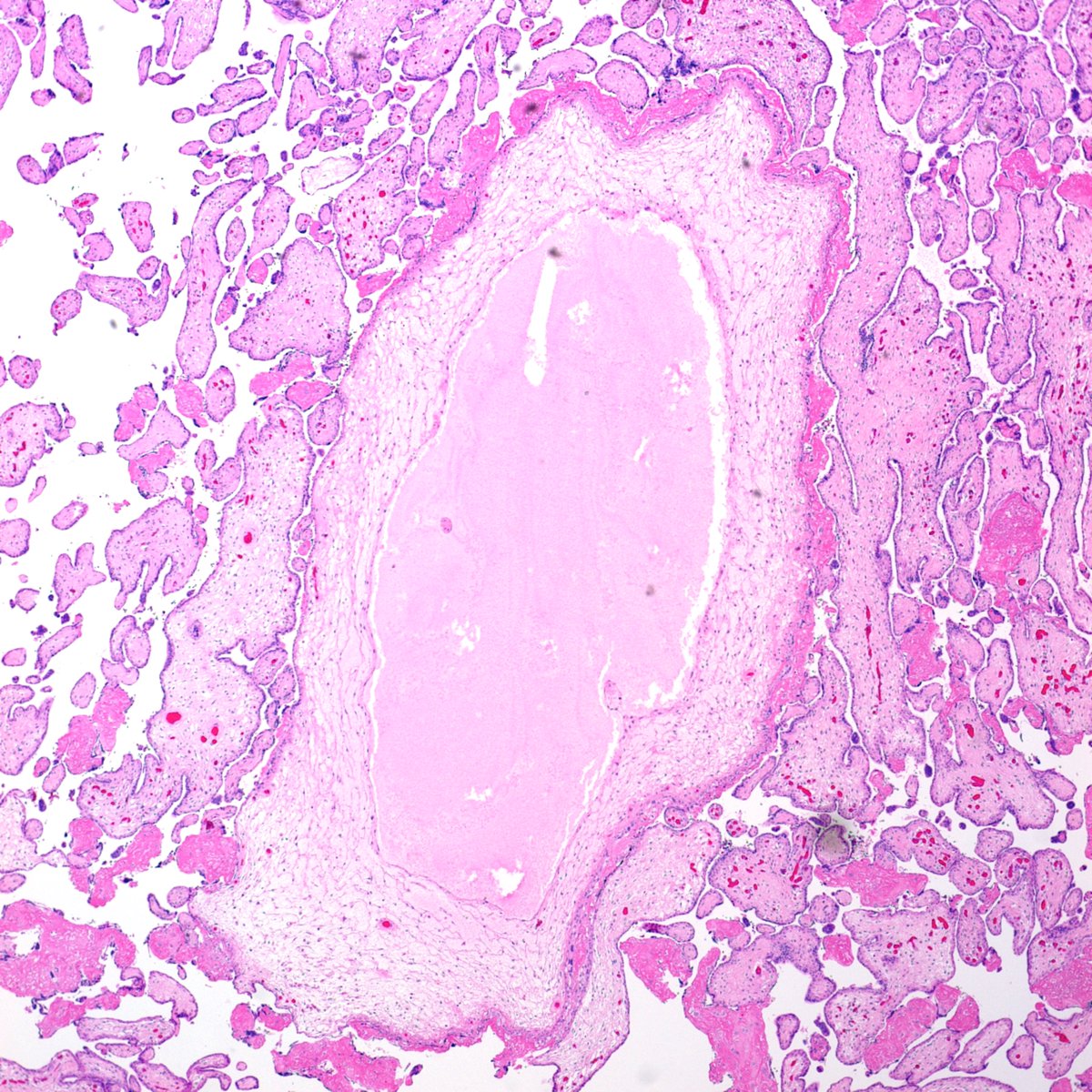

The stem villus vessel shows luminal obliteration and associated fibrointimal proliferation, consistent with late stages of thrombosis. 

p57 highlights the cytotrophoblastic cells located at the periphery of the abnormally large villi. The remaining stromal cells within the villi are completely negative. 

Differential?
This is an example of placental mesenchymal dysplasia (PMD). It is a rare form of abnormal placental development. It arises from paternally expressed, maternally imprinted fetal growth-promoting genes (IGF2) and maternally expressed, paternally imprinted genes (CDKN1C).
What does CDKN1C encode?
p57. Essentially the fetal tissues are a mosaic of two genotypes: one consisting of a normal, biparentally inherited set of chromosomes, and another with only paternally inherited chromosomes. The resulting diandric diploidy leads to an imbalance of gene expression.
The overexpression of IGF-2 and underexpression of CDKN1C are located at the 11p15.5 locus. What is 11p15.5 implicated in?
Beckwith-Wiedemann. Approximately 20% of cases are associated with PMD.
Clinching the diagnosis of PMD is difficult. The large stem villus cisterns (as opposed to terminal), enlarged villi, hypervascularity of the villi, stem vessel obliteration, and chorionic plate vessel dilation all need to correlate with clinical features and molecular testing. 

First post in a long while! It's been a little busy lately :)
This case was presented as an interesting case by our very own @DrMedeirosPath and Dr. Dan Manzoor. I thought this case might scratch that "rare entities" itch that all #pathtwitter loves.
This case was presented as an interesting case by our very own @DrMedeirosPath and Dr. Dan Manzoor. I thought this case might scratch that "rare entities" itch that all #pathtwitter loves.
@TristanRutland7 @mhassanaimc @ALBoothMD @BrainsSlicer @DrVish @gildasantoscyto @MELanocyteMD @kkuanMD @KMirza @marenwhymd @Hansalah @mzehraordulu @Mvgs1706 @Vik_deshpandeMD @JojoPathAdvntrs @DoktoraMalvar @MarcosLepeMD
• • •
Missing some Tweet in this thread? You can try to
force a refresh





